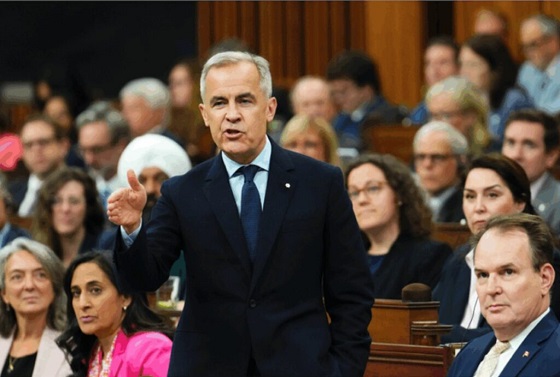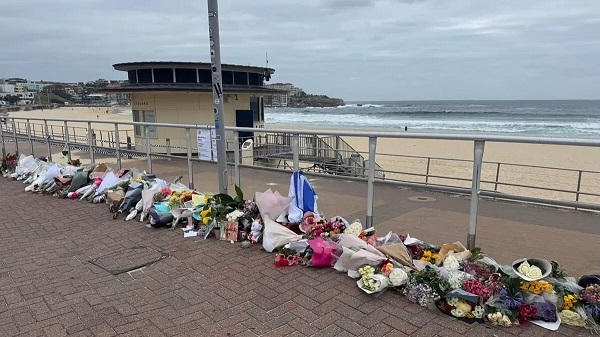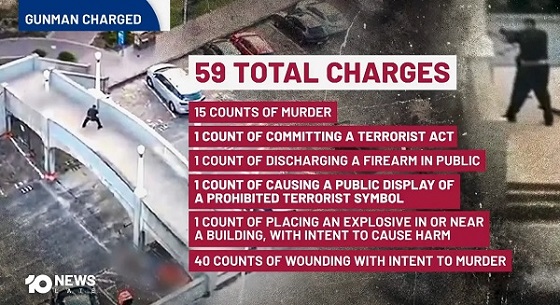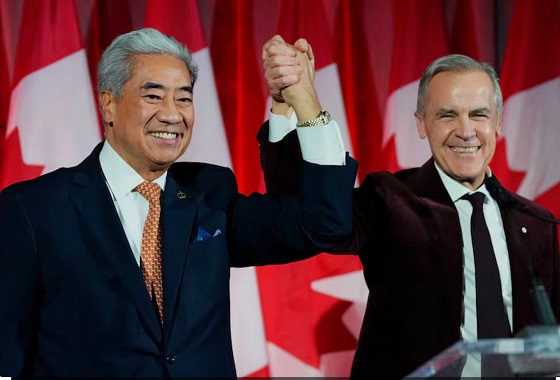Uncategorized
Christians seek solace in prayer after Indonesia disasters

PALU, Indonesia — Christians dressed in their tidiest clothes flocked to Sunday sermons in the earthquake and tsunami damaged Indonesian city of Palu, hoping for answers to the double tragedy that inflicted deep trauma on their community.
Indonesia’s disaster agency said Sunday that the death toll had climbed to 1,763, with more than 5,000 feared missing. Agency spokesman Sutopo Purwo Nugroho said officials were trying to confirm the number still missing in several villages obliterated when the quake caused loose soil to liquefy, sucking houses into deep mud and burying occupants.
Protestants, Catholics and Charismatics make up about 10
At least 200 people including soldiers filled the grey pews of the Protestant Manunggal church in Palu for the second of three services planned Sunday.
They sang as a young girl in a black and white dress with a red bow danced in the aisle, prayed and listened to a 30-minute sermon from the priest, Lucky Malonda. A woman in the front pew wept.
Min Kapala, a 49-year-old teacher, said she came to the city of more than 25 churches from an outlying area because her usual house of worship was destroyed and liquefaction moved a different piece of ground to its location.
“I’m here at this particular church because my own church is no more; it’s
Outside the church, Malonda said the intensity of the disaster had taken even scientists by surprise and called it the will of God. Two people from his congregation were missing, he said.
“This is for sure part of godly intervention, not outside the power of almighty God, that can’t be predicted or planned for by anything,” he said.
Malonda said religious leaders are discussing holding inter-faith prayers but nothing has been agreed yet.
Central Sulawesi, of which Palu is the capital, has a history of violent conflict between Muslims and Christians, though tensions have calmed in the past decade.
As searchers continued to dig through rubble Sunday, central Sulawesi governor Loki Djanggola said local officials were meeting religious groups and families of victims to seek their consent to turn
He said on local television that survivors in the outlying villages in Petobo, Balaroa and Jono Oge could be relocated and monuments be built in the areas, which now look like wastelands, to remember the victims interred there.
Hundreds of bodies are believed buried in deep mud in these areas, but officials have said it is not safe for heavy equipment to operate there and also they fear the risk of the spread of disease from decomposed bodies.
While grappling with immediate relief needs, the government is also mapping out plans to help more than 70,000 people, including tens of thousands of children, who have been displaced by the disasters to rebuild their lives.
Social welfare officials have set up nurseries in makeshift tents as stopgap to keep children safe and help them heal from the trauma. Local television showed children coloring in one such tent in Palu and staff using puppets to minister to affected kids.
Market vendors have resumed business and roadside restaurants were open in Palu but long lines of cars and motorcycles still snarled out of gas stations.
In the Indonesian capital, Jakarta, volunteers walked around thoroughfares empty of cars collecting donations for earthquake victims during the weekly car free morning in the city
___
Associated Press reporter Eileen Ng in Jakarta, Indonesia, contributed to this report.
Stephen Wright, The Associated Press
Uncategorized
Cost of bureaucracy balloons 80 per cent in 10 years: Public Accounts

The cost of the bureaucracy increased by $6 billion last year, according to newly released numbers in Public Accounts disclosures. The Canadian Taxpayers Federation is calling on Prime Minister Mark Carney to immediately shrink the bureaucracy.
“The Public Accounts show the cost of the federal bureaucracy is out of control,” said Franco Terrazzano, CTF Federal Director. “Tinkering around the edges won’t cut it, Carney needs to take urgent action to shrink the bloated federal bureaucracy.”
The federal bureaucracy cost taxpayers $71.4 billion in 2024-25, according to the Public Accounts. The cost of the federal bureaucracy increased by $6 billion, or more than nine per cent, over the last year.
The federal bureaucracy cost taxpayers $39.6 billion in 2015-16, according to the Public Accounts. That means the cost of the federal bureaucracy increased 80 per cent over the last 10 years. The government added 99,000 extra bureaucrats between 2015-16 and 2024-25.
Half of Canadians say federal services have gotten worse since 2016, despite the massive increase in the federal bureaucracy, according to a Leger poll.
Not only has the size of the bureaucracy increased, the cost of consultants, contractors and outsourcing has increased as well. The government spent $23.1 billion on “professional and special services” last year, according to the Public Accounts. That’s an 11 per cent increase over the previous year. The government’s spending on professional and special services more than doubled since 2015-16.
“Taxpayers should not be paying way more for in-house government bureaucrats and way more for outside help,” Terrazzano said. “Mere promises to find minor savings in the federal bureaucracy won’t fix Canada’s finances.
“Taxpayers need Carney to take urgent action and significantly cut the number of bureaucrats now.”
Table: Cost of bureaucracy and professional and special services, Public Accounts
| Year | Bureaucracy | Professional and special services |
|
$71,369,677,000 |
$23,145,218,000 |
|
|
$65,326,643,000 |
$20,771,477,000 |
|
|
$56,467,851,000 |
$18,591,373,000 |
|
|
$60,676,243,000 |
$17,511,078,000 |
|
|
$52,984,272,000 |
$14,720,455,000 |
|
|
$46,349,166,000 |
$13,334,341,000 |
|
|
$46,131,628,000 |
$12,940,395,000 |
|
|
$45,262,821,000 |
$12,950,619,000 |
|
|
$38,909,594,000 |
$11,910,257,000 |
|
|
$39,616,656,000 |
$11,082,974,000 |
Uncategorized
Trump Admin Establishing Council To Make Buildings Beautiful Again


From the Daily Caller News Foundation
By Jason Hopkins
The Trump administration is creating a first-of-its-kind task force aimed at ushering in a new “Golden Age” of beautiful infrastructure across the U.S.
The Department of Transportation (DOT) will announce the establishment of the Beautifying Transportation Infrastructure Council (BTIC) on Thursday, the Daily Caller News Foundation exclusively learned. The BTIC seeks to advise Transportation Secretary Sean Duffy on design and policy ideas for key infrastructure projects, including highways, bridges and transit hubs.
“What happened to our country’s proud tradition of building great, big, beautiful things?” Duffy said in a statement shared with the DCNF. “It’s time the design for America’s latest infrastructure projects reflects our nation’s strength, pride, and promise.”
“We’re engaging the best and brightest minds in architectural design and engineering to make beautiful structures that move you and bring about a new Golden Age of Transportation,” Duffy continued.
Mini scoop – here is the DOT’s rollout of its Beautifying Transportation Infrastructure Council, which will be tasked with making our buildings beautiful again. pic.twitter.com/
9iV2xSxdJM — Jason Hopkins (@jasonhopkinsdc) October 23, 2025
The DOT is encouraging nominations of the country’s best architects, urban planners, artists and others to serve on the council, according to the department. While ensuring that efficiency and safety remain a top priority, the BTIC will provide guidance on projects that “enhance” public areas and develop aesthetic performance metrics.
The new council aligns with an executive order signed by President Donald Trump in August 2025 regarding infrastructure. The “Making Federal Architecture Beautiful Again” order calls for federal public buildings in the country to “respect regional architectural heritage” and aims to prevent federal construction projects from using modernist and brutalist architecture styles, instead returning to a classical style.
“The Founders, in line with great societies before them, attached great importance to Federal civic architecture,” Trump’s order stated. “They wanted America’s public buildings to inspire the American people and encourage civic virtue.”
“President George Washington and Secretary of State Thomas Jefferson consciously modeled the most important buildings in Washington, D.C., on the classical architecture of ancient Athens and Rome,” the order continued. “Because of their proven ability to meet these requirements, classical and traditional architecture are preferred modes of architectural design.”
The DOT invested millions in major infrastructure projects since Trump’s return to the White House. Duffy announced in August a $43 million transformation initiative of the New York Penn Station in New York City and in September unveiledmajor progress in the rehabilitation and modernization of Washington Union Station in Washington, D.C.
The BTIC will comprise up to 11 members who will serve two-year terms, with the chance to be reappointed, according to the DOT. The task force will meet biannually. The deadline for nominations will end Nov. 21.
-

 Business19 hours ago
Business19 hours agoCanada Hits the Brakes on Population
-

 Crime8 hours ago
Crime8 hours agoBrown University shooter dead of apparent self-inflicted gunshot wound
-

 Business2 days ago
Business2 days agoOttawa Pretends To Pivot But Keeps Spending Like Trudeau
-

 Energy2 days ago
Energy2 days agoLiberals Twisted Themselves Into Pretzels Over Their Own Pipeline MOU
-

 Censorship Industrial Complex2 days ago
Censorship Industrial Complex2 days agoHow Wikipedia Got Captured: Leftist Editors & Foreign Influence On Internet’s Biggest Source of Info
-

 Frontier Centre for Public Policy21 hours ago
Frontier Centre for Public Policy21 hours agoCanada Lets Child-Porn Offenders Off Easy While Targeting Bible Believers
-

 International2 days ago
International2 days agoBondi Beach Shows Why Self-Defense Is a Vital Right
-

 Crime2 days ago
Crime2 days agoThe Uncomfortable Demographics of Islamist Bloodshed—and Why “Islamophobia” Deflection Increases the Threat









